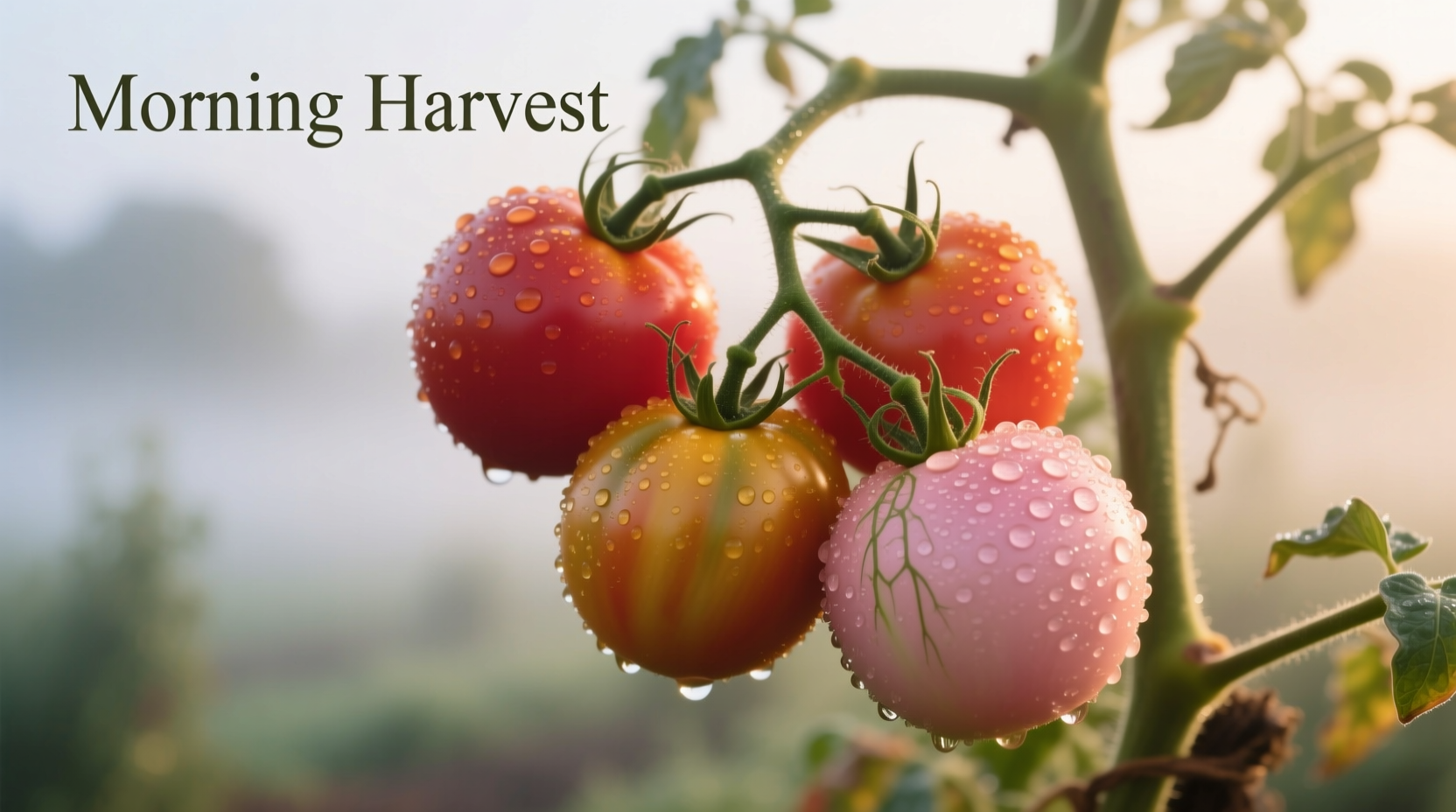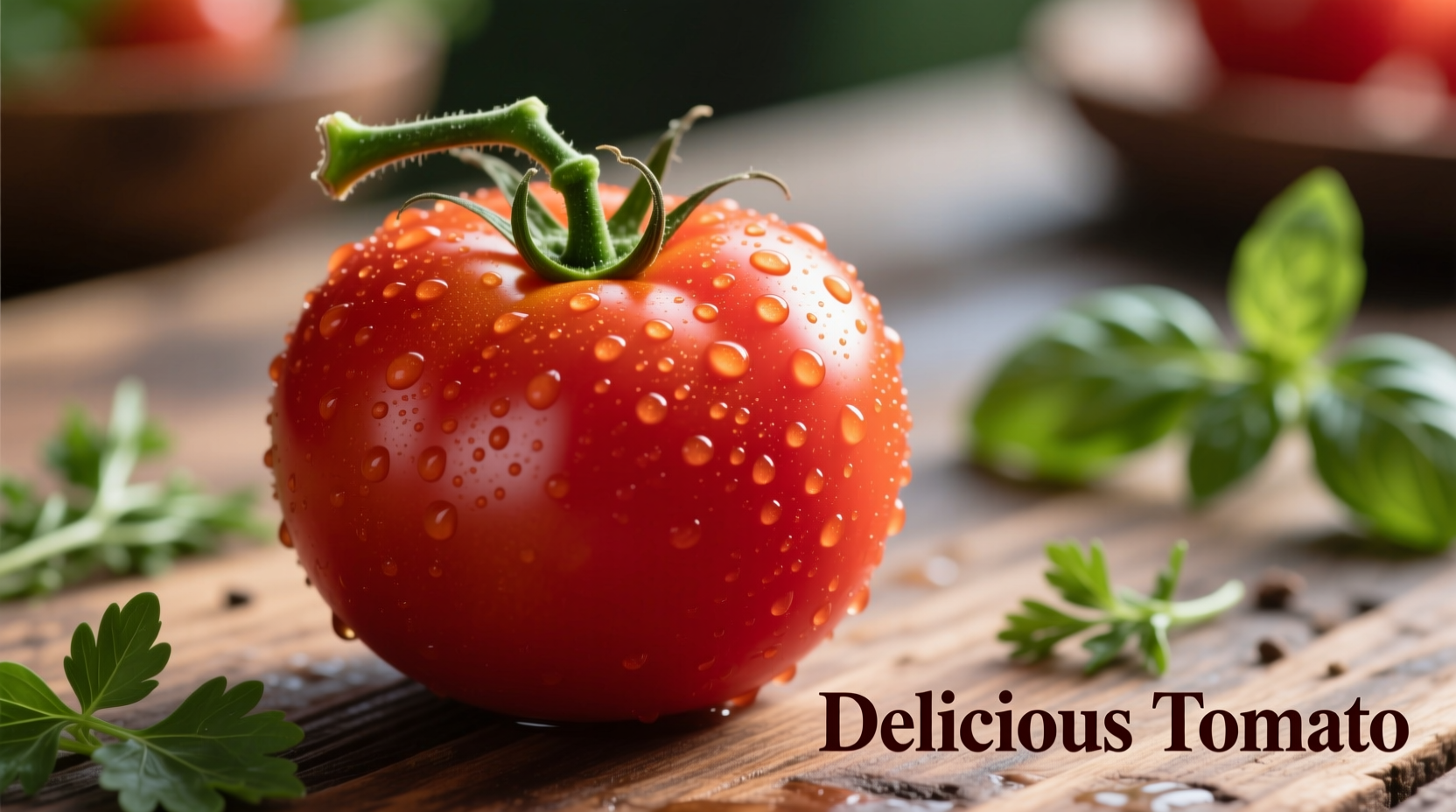What Actually Makes a Tomato Delicious: Beyond Sweetness
While many assume sweetness defines tomato flavor, research from the University of Florida's Institute of Food and Agricultural Sciences reveals a more complex equation. The most delicious tomatoes achieve balance between three key elements: sugars (primarily glucose and fructose), acids (citric and malic), and volatile organic compounds that create aroma. Commercial varieties often prioritize shelf life and uniform appearance over these flavor components, sacrificing taste for transportability.
A landmark 2012 study published in Science analyzed 398 tomato varieties and found that modern breeding has inadvertently deactivated the SlGLK2 gene in many commercial hybrids, reducing sugar and lycopene content by up to 20%. This genetic insight explains why heirloom varieties consistently outperform supermarket tomatoes in blind taste tests conducted by organizations like the American Homebrewers Association.
Tomato Flavor Evolution: A Scientific Timeline
Understanding how we arrived at today's flavor landscape helps explain why certain varieties taste superior. This timeline shows key developments in tomato flavor research:
| Year | Milestone | Impact on Flavor Understanding |
|---|---|---|
| 1940s | Introduction of commercial hybrids | Focus shifted to uniform ripening and firmness, sacrificing complex flavor compounds |
| 1970s | First gas chromatography analysis of tomato volatiles | Identified 30+ aroma compounds contributing to "tomato flavor" |
| 2001 | Tomato genome project launched | Laid groundwork for understanding genetic basis of flavor traits |
| 2012 | SlGLK2 gene discovery (University of Florida) | Explained why many modern varieties lack sugar and lycopene |
| 2020 | Flavor-based breeding programs expand | New varieties like 'Tommy Toe' combine shelf stability with heirloom flavor |
Source: PLOS Biology - The Genetic Basis for High-Quality Tomato Flavor
Top 7 Most Flavorful Tomato Varieties Compared
Based on multi-year taste trials by the Royal Horticultural Society and University of California Cooperative Extension, these varieties consistently deliver exceptional flavor:
| Variety | Flavor Profile | Best Use | Sugar Content (Brix) | Special Characteristics |
|---|---|---|---|---|
| Brandywine | Rich, complex, balanced sweet-acid | Fresh eating, sandwiches | 5.5-6.5 | Large beefsteak, pink or red, heirloom since 1885 |
| Cherokee Purple | Earthy, smoky, low acidity | Salads, fresh applications | 6.0-7.0 | Dark purple shoulders, heirloom from Tennessee |
| San Marzano | Sweet, low seed count, meaty | Sauces, canning | 5.0-6.0 | DOP-certified Italian variety, elongated shape |
| Black Krim | Savory, umami-rich, moderate acidity | Caprese, fresh preparations | 5.5-6.5 | Dark red-brown, heirloom from Crimea |
| Garden Gem | Bright, sweet-tart, complex | Salads, fresh eating | 6.5-7.5 | Cherry type, disease-resistant modern heirloom |
| Mortgage Lifter | Exceptionally sweet, mild acidity | Sandwiches, fresh eating | 5.5-6.5 | Large pink beefsteak, created during Great Depression |
| Green Zebra | Tangy, citrus notes, firm texture | Salsas, pickling, fresh applications | 5.0-6.0 | Distinctive green stripes, heirloom from 1980s |
Source: UC Cooperative Extension - Tomato Variety Trial Results 2023
How to Select Truly Delicious Tomatoes
Whether at farmers markets or grocery stores, these evidence-based selection techniques ensure maximum flavor:
- Check for "shoulders" - Varieties like Cherokee Purple show darker shoulders when fully vine-ripened, indicating peak sugar development
- Avoid refrigeration - USDA research confirms temperatures below 55°F (13°C) destroy flavor-producing enzymes and cause mealiness
- Look for slight irregularities - Perfectly uniform shape often indicates commercial breeding for appearance over flavor
- Sniff the stem end - Ripe tomatoes emit detectable volatile compounds; no aroma means underripe or flavor-deficient
- Choose heavier specimens - Weight indicates higher water content, which carries flavor compounds

Context Matters: Best Tomatoes for Different Uses
Not all delicious tomatoes work equally well in every application. Understanding context boundaries prevents flavor disappointment:
- Fresh eating/salads - Prioritize high Brix (sugar) varieties like Cherokee Purple or Brandywine. Their complex flavor shines without cooking.
- Pasta sauces - Choose meaty, low-moisture varieties like San Marzano or Amish Paste. Their concentrated flavor intensifies during cooking.
- Salsas and preserves - Opt for varieties with higher acidity like Green Zebra or Yellow Pear to balance sweetness and ensure proper setting.
- Roasting/grilling - Select dense-fleshed varieties like German Red Strawberry that hold shape while caramelizing sugars.
The University of Massachusetts Extension notes that using sauce tomatoes raw often results in disappointing flavor, while delicate heirlooms can become mushy when cooked. Matching variety to application preserves optimal taste.
Maximizing Flavor: Storage and Preparation Science
How you handle tomatoes after purchase significantly impacts their deliciousness. Follow these research-backed methods:
- Room temperature ripening - Complete ripening at 68-72°F (20-22°C) allows full development of flavor compounds. Never refrigerate unripe tomatoes.
- Cut properly - The University of California's Master Food Preservers recommend cutting through the stem scar rather than horizontally to preserve gel surrounding seeds, which contains key flavor compounds.
- Season strategically - Add salt 10 minutes before serving to draw out juices without making tomatoes soggy. Acid (like vinegar) should be added just before serving to preserve fresh flavor.
- Combine with fats - Lycopene and other flavor compounds are fat-soluble. Drizzling with quality olive oil enhances flavor perception.
Simple Preparation Methods That Highlight Natural Deliciousness
You don't need complex recipes to showcase truly delicious tomatoes. These chef-approved techniques maximize natural flavor:
- The 3-Ingredient Caprese - Layer sliced heirloom tomatoes with fresh mozzarella and basil. Drizzle with extra virgin olive oil and sea salt. Let sit 10 minutes before serving to allow flavors to meld.
- Tomato Water - Place ripe tomato slices on a wire rack over a bowl. Refrigerate 4-6 hours to collect naturally exuded flavorful liquid for cocktails or dressings.
- Slow-Roasted Cherry Tomatoes - Toss cherry tomatoes with olive oil, thyme, and salt. Roast at 275°F (135°C) for 90 minutes until concentrated but not mushy.
- Tomato Ice Cubes - Blend ripe tomatoes, strain, and freeze in ice cube trays. Use in soups or sauces for intense flavor without excess liquid.
Professional chefs like Thomas Keller emphasize that with truly delicious tomatoes, "less is more" - complex preparations often mask rather than enhance natural flavor.











 浙公网安备
33010002000092号
浙公网安备
33010002000092号 浙B2-20120091-4
浙B2-20120091-4